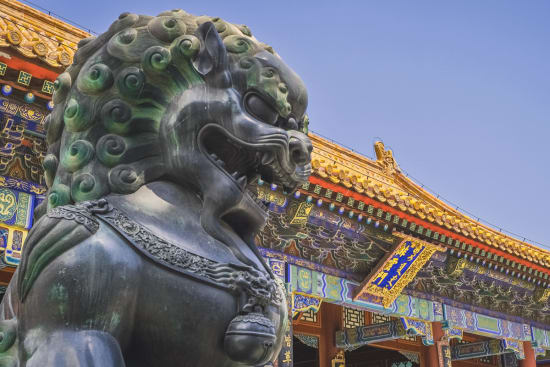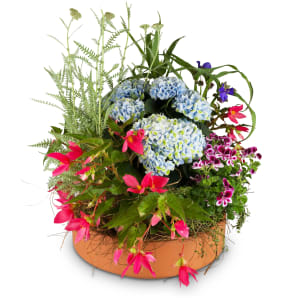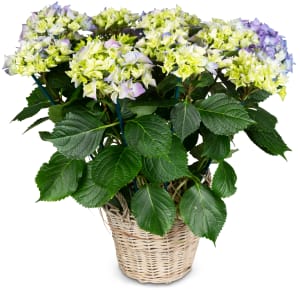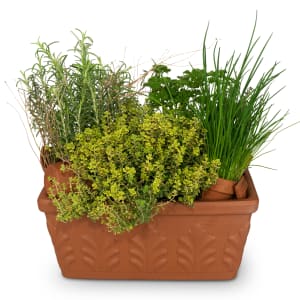As autumn approaches they reappear: exuberant chrysanthemums in an unbelievable variety of colours. Originally from Asia, they became the centre of attention there a very long time ago.
In China, for example, where the composite-flowered plant was cultivated as early as the 15th century BC and rose to become a favourite with the mandarins. Early chrysanthemums were only available in yellow. From China they came to Japan, where they delighted the Emperor. For centuries, he was the only person permitted to own and cultivate them.
Chrysanthemums
A favourite flower of the Japanese emperor, chrysanthemum has conquered the whole world. Today, the flower with poetic names has countless fans.

A golden flower conquers the world

The cultivation of chrysanthemums reached its zenith in Japan in the 16th century, and every known variety bloomed in the Imperial garden up to the start of the First World War.
French voyager Pierre Blancard brought the first three species to Europe in 1789. Only one, with a red flower, has survived.
Luckily, Scottish gardener Robert Fortune managed to transport a whole range of different chrysanthemums from China to the UK in 1843. From there, the flower conquered first America, and then the rest of Europe. The name “«»"chrysanthemum”«»" is composed of the Greek word «chrysos», which means «gold», and «anthemon», meaning «flower» and therefore means «golden flower».
Luckily, Scottish gardener Robert Fortune managed to transport a whole range of different chrysanthemums from China to the UK in 1843. From there, the flower conquered first America, and then the rest of Europe. The name “«»"chrysanthemum”«»" is composed of the Greek word «chrysos», which means «gold», and «anthemon», meaning «flower» and therefore means «golden flower».

Of colours, blossoms and names ...
Chrysanthemums are like Indian Summers: colourful and beautiful. In every colour from white through yellow, green, orange and copper to red, rose-colour, pink and wine-red, they are sure to lift anyone's spirits even on the gloomiest day.
The blossoms vary as well. There are large, tiny, single, semi-double and double flowers, not to mention the pompom, spider and anemone varieties.

The names are exciting as well. Some of them refer to the colour of the blossom, such as «Goldmarie» (golden yellow), «Kleiner Bernstein» (literally little amber, an apricot shade)
or «White Bouquet» (white).
However, there are also names that sound so romantic that the name alone makes you want a closer look at the flower behind it. For example, the silver-rose coloured «Nebelrose» (misty rose), that radiates grace and elegance with its beautifully formed, large blossom, or the «Lachsrote Wolke» (salmon-pink cloud), whose muted red blooms continue to flourish into November.
However, there are also names that sound so romantic that the name alone makes you want a closer look at the flower behind it. For example, the silver-rose coloured «Nebelrose» (misty rose), that radiates grace and elegance with its beautifully formed, large blossom, or the «Lachsrote Wolke» (salmon-pink cloud), whose muted red blooms continue to flourish into November.

In short: visit your florist or garden centre, take a look around. Then take home the splash of colour that symbolises this wonderfully vibrant season for you.
Because, as the Czech writer Pavel Kosorin so aptly put it: «Autumn is the season in which nature turns the page».

They look good enough to eat: edible chrysanthemums
It's no wonder that chrysanthemums symbolise long life. The Chinese discovered their medicinal properties early on.
Even today, dried or smoked Hang Bai chrysanthemum flowers are used to make teas that are thought to have an anti-microbial
and anti-inflammatory effect and to dilate the blood vessels. They are also rich in vitamin C, which is ideal for preventing colds.

In China, Korea and Japan chrysanthemum leaves are even eaten as a salad, while the flowers are used in Korea for sandwiches and in cake. But take care:
although many species of chrysanthemums are edible and suitable for use as plate decorations,
this does not apply to tanacetum species. Therefore, special edible or salad chrysanthemums (Chrysanthemum coronarium) are available for sale which can be grown almost anywhere.
If you harvest them young, the leaves can be used in mixed salads. Later on they can be prepared like spinach. Buds and flower heads can be blanched,
deep-fried in batter or simply used for decoration. If their unique flavour doesn't appeal to you however, you can grow this pretty plant simply for decoration.
For care tips for chrysanthemums (plants) click HERE.
For care tips for chrysanthemums (cut flowers) click HERE.
For care tips for chrysanthemums (plants) click HERE.
For care tips for chrysanthemums (cut flowers) click HERE.
More exciting topics on flowers & plants
Dahlias
Varied, colorful and simply wonderful: dahlias are an ode to summer and autumn and a symbol of happiness, health and love.
Chrysanthemums
A favourite flower of the Japanese emperor, chrysanthemum has conquered the whole world. Today, the flower with poetic names has countless fans.
Poinsettias
Did you know that poinsettias speak Spanish, that there is a Poinsettia Day and that you have the choice between an unbelievable number of colors and shapes? Find out more.
Christmas-roses
The Christmas roses available from Advent are touchingly lovely. They beautify the outside area despite frost and snow and bloom the whole winter.
Amaryllis
Amaryllis? The Advent flower, popular for its spectacular variety of colours, actually has a different name. But you know why it's a compliment when you get one?
Succulente & cacti
Because they are able to store water, they are particularly easy to care for. But they can also be extravagant, fragrant, flowering and inspire with exotic shapes.
Foliage plants
They're hip. There are many scientific reasons for that. But actually, they're just cool, and healthy, and anything but boring. Here's a little hit parade.












